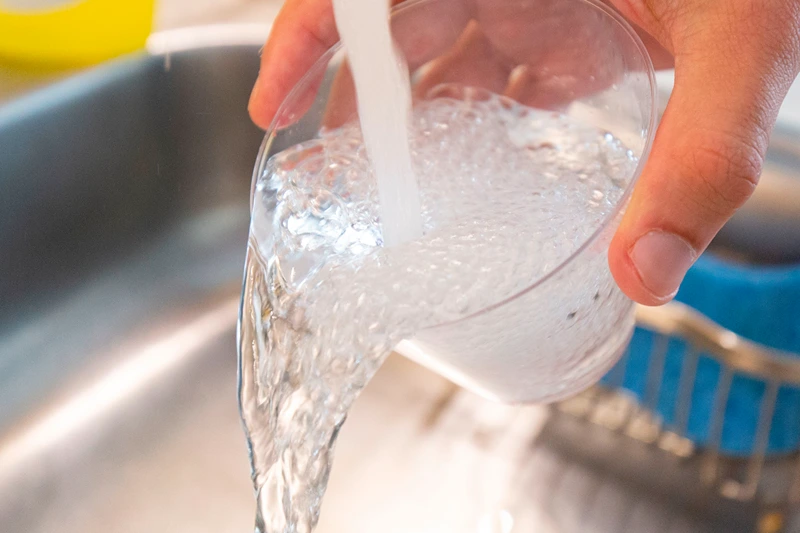
OAN Staff Blake Wolf
5:59 PM – Friday, March 28, 2025
Utah has now become the first state in the U.S. to ban fluoride in public drinking water, following assertions by Health and Human Services (HHS) Secretary Robert F. Kennedy Jr. that it contributes to various adverse health effects.
Advertisement
However, Kennedy is not the only one to highlight the potential health risks associated with excessive fluoride exposure.
“Fluoride is a neurotoxin which, in high doses, can be harmful. Excessive exposure can lead to tooth discoloration and bone problems..” according to Medical News Today.
Other possible issues, when consumed in “overabundance,” include:
Dental Fluorosis: This is a cosmetic condition that causes white or brown spots on the teeth due to excessive fluoride intake during tooth development.
Skeletal Fluorosis: This is a bone disease that occurs when fluoride accumulates in the bones, making them brittle and prone to fractures.
Acute Fluoride Poisoning: Ingesting large amounts of fluoride can lead to nausea, vomiting, diarrhea, abdominal pain, and even death.
Neurological Effects: Some studies have suggested that excessive fluoride intake may affect brain development and cognitive function in children, lowering of IQ.
Endocrine Disruption: Fluoride has been linked to hormonal imbalances, particularly affecting the thyroid gland.
Cardiovascular Disease: Some studies have associated high fluoride intake with an increased risk of cardiovascular disease.
Other Potential Negative Effects: Altered immune function, Kidney damage, Arthritis, and Diabetes.
It’s important to note that the risk of experiencing these negative effects is low when fluoride is consumed within recommended limits. The Centers for Disease Control and Prevention (CDC) recommends a fluoride level of 0.7 parts per million (ppm) in public water supplies for optimal dental health,” according to a Google AI overview of fluoride’s negative effects.
Republican Governor Spencer Cox signed the legislation into law on Thursday, banning Utah cities from adding the mineral into public water systems.
Kennedy has largely been a critic of adding fluoride into tap water — attributing the mineral to a wide range of diseases.
“Fluoride is an industrial waste associated with arthritis, bone fractures, bone cancer, IQ loss, neurodevelopmental disorders, and thyroid disease,” Kennedy previously wrote.
The addition of fluoride in public drinking water was first implemented in the 1950s, with officials claiming that its primary purpose was to prevent tooth decay. Today, more than 200 million people in the United States consume fluoridated water.
The Utah Dental Association also claims that fluoride in drinking water has the capacity to “reduce cavities by at least 25%,” with proponents rejecting the removal.
“As a father and a dentist, it is disheartening to see what a proven, public health policy, which exists for the greater good of an entire community’s oral health, has been dismantled based on distorted pseudoscience,” stated American Dental Association president Brett Kessler.
Florida’s surgeon general also previously recommended against fluoridation due to “neuropsychiatric risk” — as high levels of fluoride in drinking water has the potential to dilute the intellectual development of children, according to the National Institutes of Health (NIH).
A few months ago, a federal judge ordered the U.S. Environmental Protection Agency to regulate fluoride levels in water due to the risk of intellectual development of children, highlighting the potential danger.
Although the amount of fluoride in public drinking water is said to be “below levels [that make it] toxic,” different water sources contain a varied level of fluoridation — increasing the risk.
A 2011 report found that 2 in 5 U.S. adolescents were observed to have “mild tooth streaking or spottiness” due to high levels of fluoride, according to the Associated Press.
Critics have also argued that other countries have been able to cut cavity rates without adding fluoride into their public water, including Sweden, Finland, Denmark, and Japan, among others. Critics noted that the addition of fluoride in products like toothpaste means that the mineral is no longer needed in tap water.
Republican Representative Stephanie Gricius (R-Utah), a sponsor of the bill, stated that the issue of fluoride in water was of “individual choice.”
The ban is expected to go into effect on May 7th, as lawmakers in Ohio, South Carolina, and Florida have also begun taking steps to remove fluoride from public water.
Stay informed! Receive breaking news blasts directly to your inbox for free. Subscribe here. https://www.oann.com/alerts
Advertisements below





